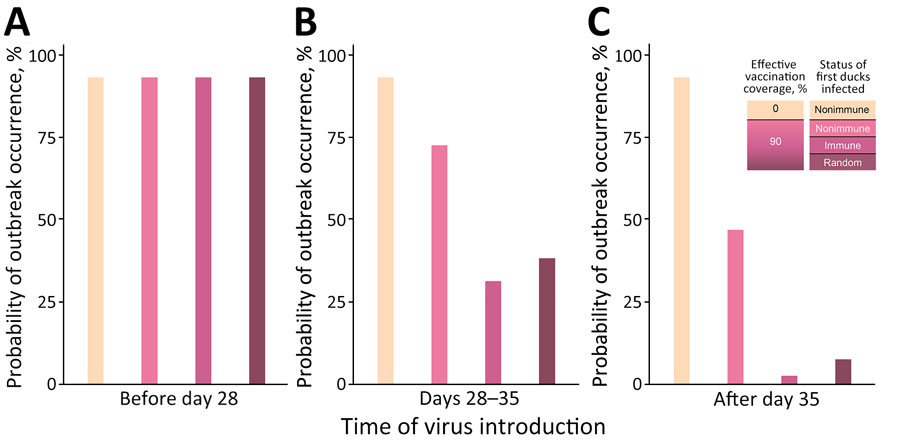Volume 31, Number 1—January 2025
Research
Surveillance Strategy in Duck Flocks Vaccinated against Highly Pathogenic Avian Influenza Virus
Figure 1

Figure 1. Probability of outbreak occurrence in nonvaccinated and preventively vaccinated duck flocks in a study of surveillance strategies in duck flocks vaccinated against highly pathogenic avian influenza virus. Graphs show different timings of virus introduction: A) preimmunity phase, in which the virus was introduced into the flock when ducks were not yet immune (i.e., before day 28); B) transition phase, in which the virus was introduced between day 28 and day 35; and C) immunity phase, in which the virus was introduced once immunity was fully reached. Each probability was calculated based on 500 stochastic simulations of the model. Effective vaccination coverage in vaccinated flocks was assumed to be 90%. Outbreak was defined as a simulation where >5 ducks became infected after the first infected duck. When we randomly selected the status of the first infected duck, we assumed a probability of 0.1 to be nonimmune and 0.9 to be immune.